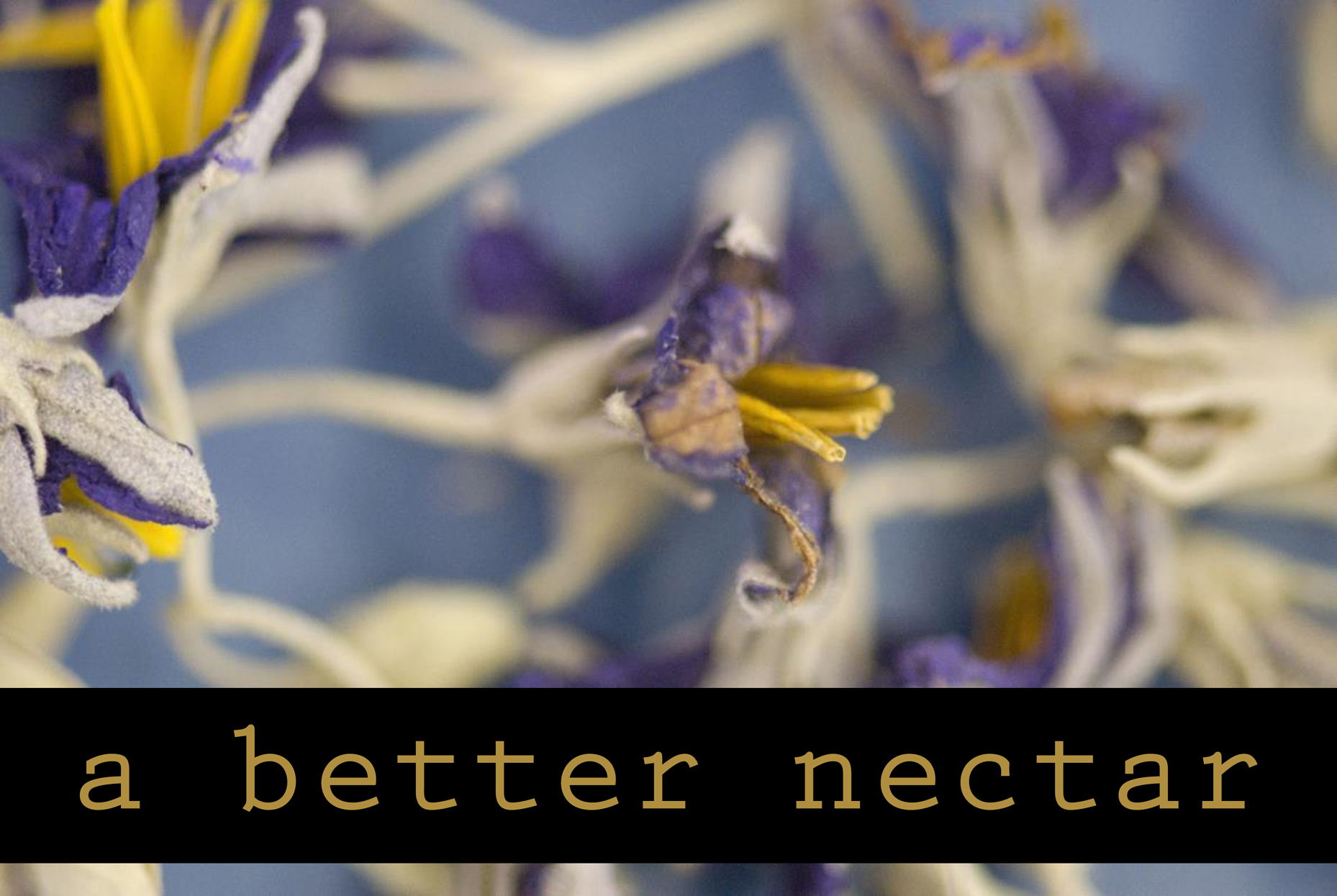
A Better Nectar
The spring 2018 exhibition, a better nectar, was divided between the Gillespie Museum and the Hand Art Center. At both locations, visitors were provided a human-scaled experience of a bee's intimate sensorial journey from its underground nest to an audibly and visually pulsating world. The centerpiece at the HAC was artist Jessica Rath's creation, “Resonant Nest,” a multi-sensory, human-scaled bumblebee nest that resonated human voice interpretations of bee communication composed by long-time collaborator Robert Hoehn. The “Bee Purple” installation's immersive light projections emulated bees' spectrally shifted experience of the color wavelengths that attract them to floral patterns and nectar.
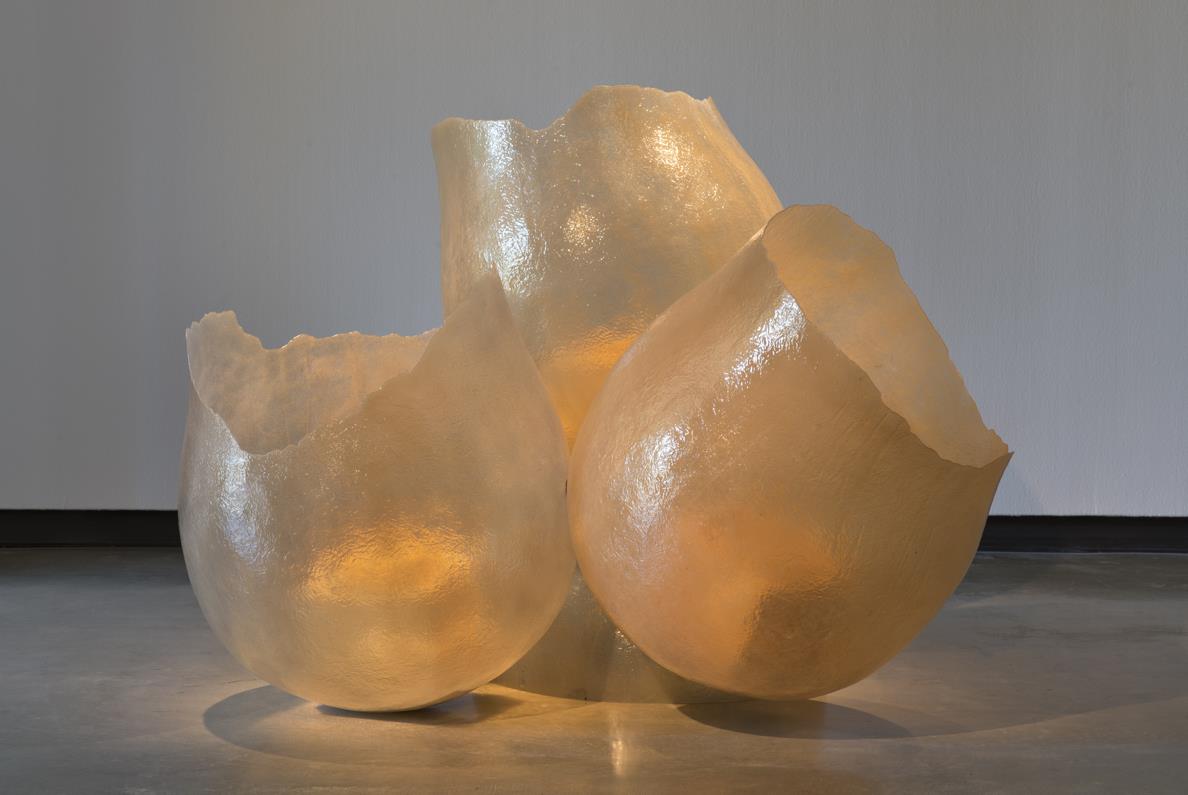
Jessica Rath's "Resonant Nest" was on display at Stetson's Hand Art Center from January 26 - March 3, 2018. This small section of “Resonant Nest” was part of the 14 cells that made up the human-scaled bumblebee nest, with each cell designed to be acoustically resonant to fill the exhibition with the sound of foraging.
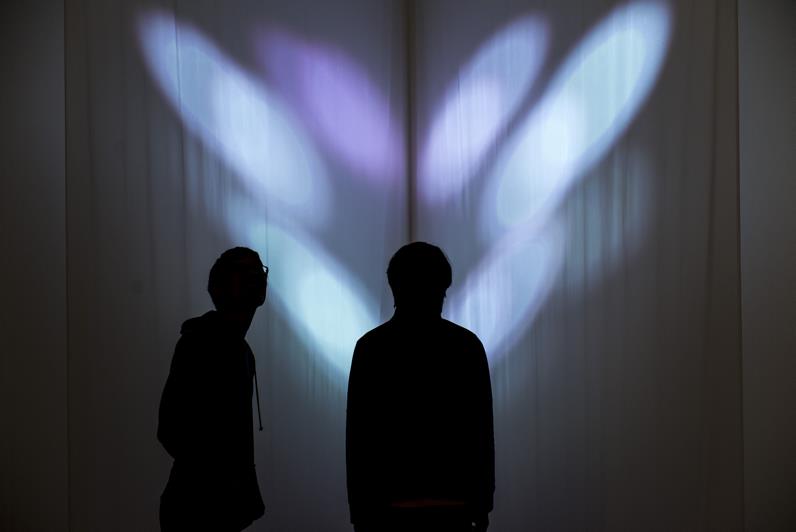
"Bee Purple" emulates bees' color experience attracting them to flowers and nectar.
The Gillespie Museum featured “Staminal Evolution,” a seven-foot version of a tiny anther within a manzanita flower. The artwork was based on flowers that require “buzz pollination,” a process in which bees vibrate a certain frequency to open the flower and thus release its pollen. The sculpture emitted a sound score representing pollen flowing from the anther hole.
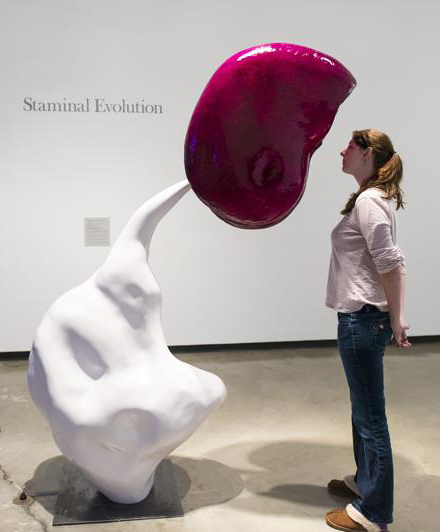
"Staminal Evolution (Arctostaphylos)" was on display at the Gillespie Museum.
Associated with a better nectar exhibition, but still ongoing, are a Research Station and display area at the Gillespie, which features research from the Pollinator Project, including a gallery of digital images of Florida native pollinators, taken by Peter May, PhD (Professor of Biology, Stetson); displays of native pollinating insects, assembled by Cynthia Bennington, PhD (Professor of Biology, Stetson); and a seed library, from which visitors may “borrow” the seeds of native plants to sow at home. At the adjacent Rinker Environmental Learning Center (RELC), visitors may tour the Volusia Sandhill Ecosystem, an urban reforestation project, to view and monitor native pollinators in the landscape.
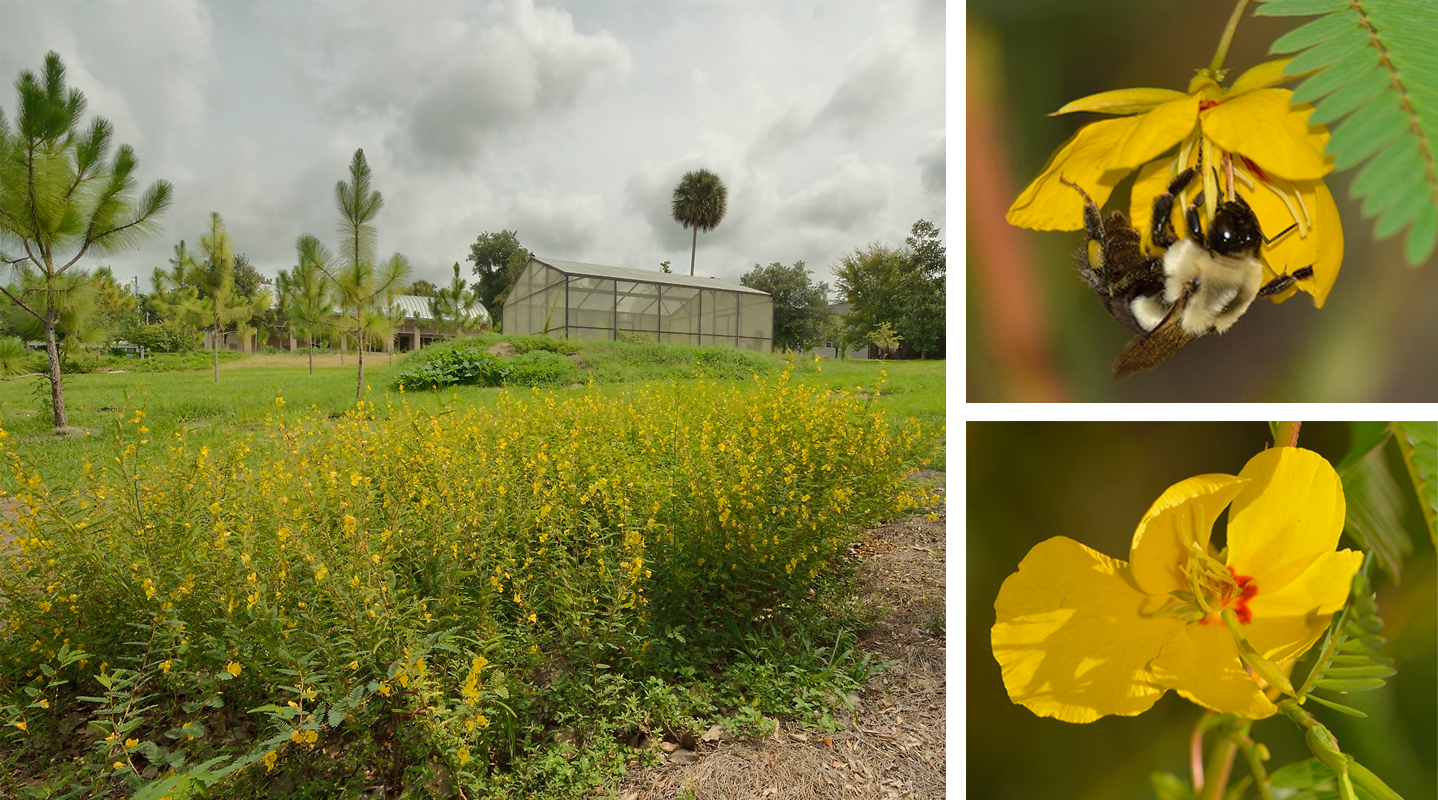
The Volusia Sandhill Ecosystem on the Gillespie Museum grounds adjacent to the Rinker Environmental Learning Center is the site of continuing research on native Florida pollinators.
View or download an overview of the exhibit and other pollination-related projects that were on display at the Gillespie Museum and around the Stetson University campus in the spring of 2018.
About the Artists
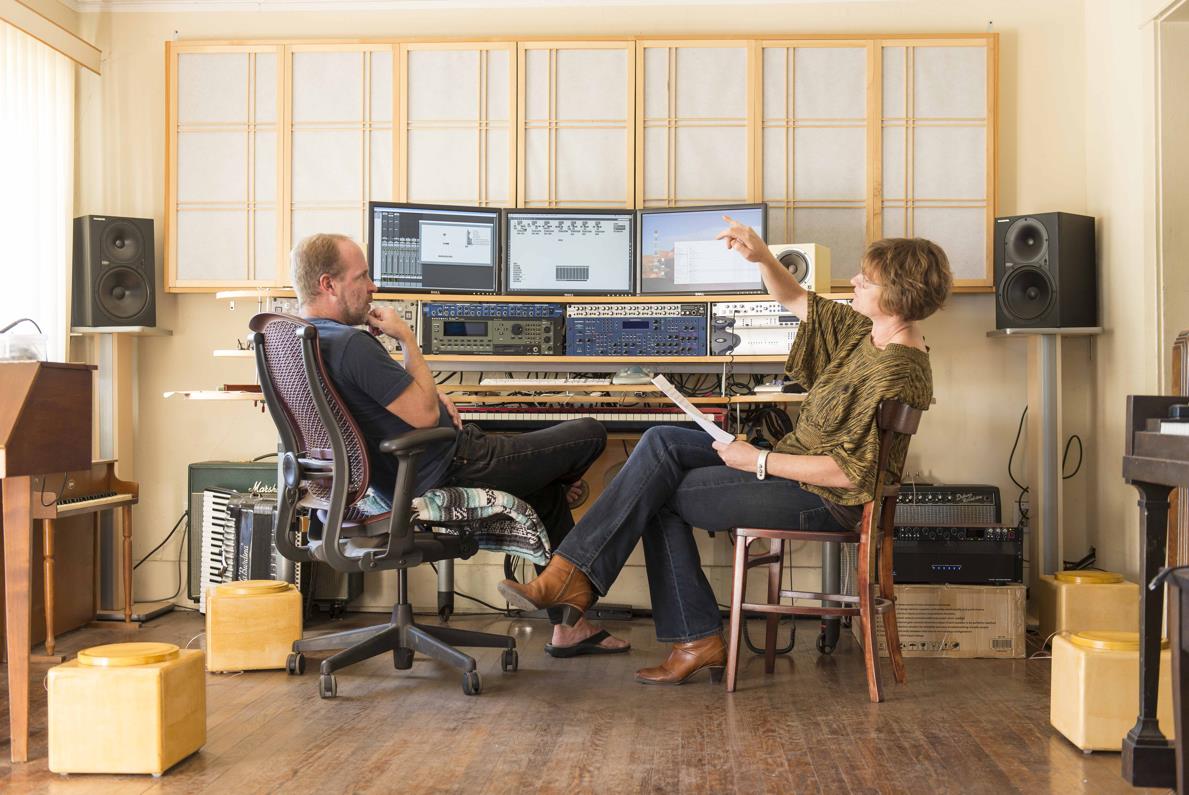
Jessica Rath, Visual Artist, Art Center College of Design, Pasadena, CA; and Robert Hoehn, Composer, Los Angeles, CA, collaborate on the score for "Resonant Nest."
Jessica Rath teaches at Art Center College of Design, Pasadena, CA and received her BA from the University of Missouri and her MFA from the California Institute of the Arts. Her most recent awards include Mid-Career Fellowships from California Community Foundation (2014) and the City of Los Angeles (2013, COLA). In 2012-13 her exhibit take me to the apple, based on genetic work at Cornell University Agricultural Research Station, garnered reviews in Art in America, Artforum, Los Angeles Times, Bon Appetit, and Smithsonian Magazine. Her work is included in the Center for Art and Environment Archive Collections at the Nevada Museum of Art.
Composer and sound designer Robert Hoehn received his BFA in Electro-Acoustic Composition from the California Institute of the Arts in 1994 with additional studies at the Center for Computer Research in Music and Acoustics at Stanford University and the Hartt School of Music at the University of Hartford. Trained as a musician, composer and keyboardist, Hoehn creates music and sound for pictures and builds interactive electronic sound systems for galleries, and experimental mechanical acoustical sound sculptures, most often exhibited in art and music festivals. In 2014, Hoehn created Wind Sound Sanctuary with funding from Burning Man Arts, a 50-foot playable pipe organ, windmill-driven with custom Aeolian harps.